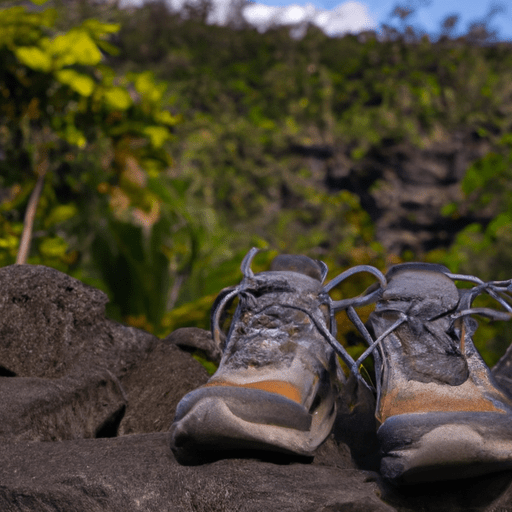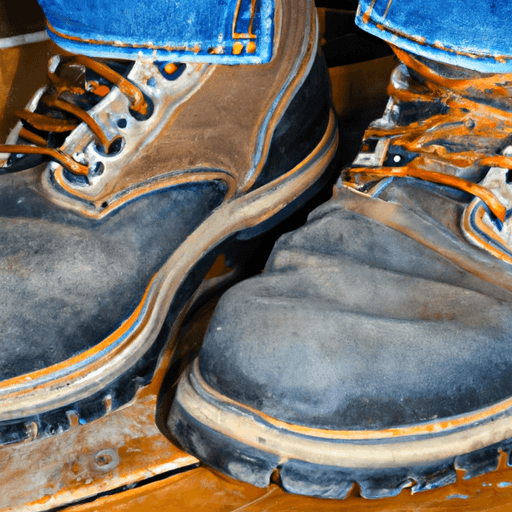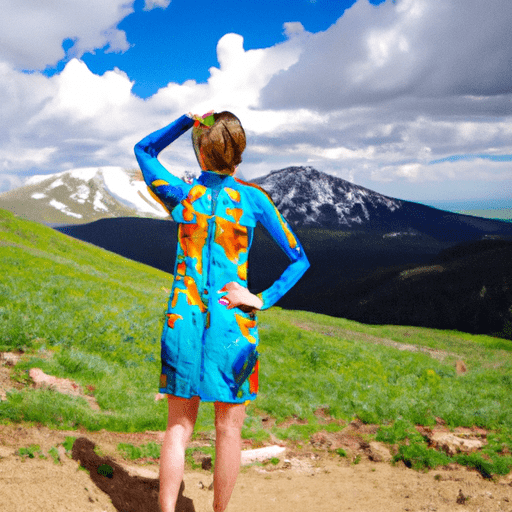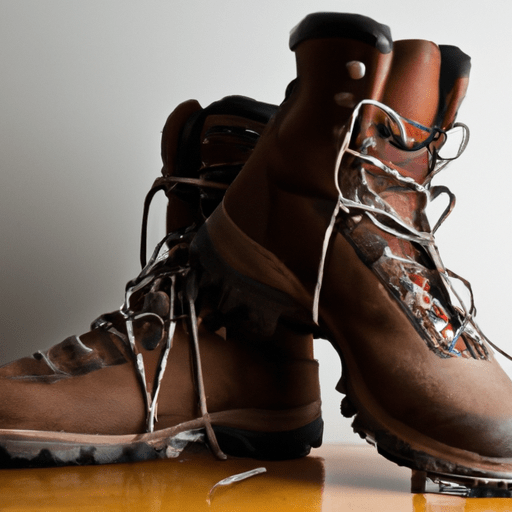Are you planning a hiking adventure in the beautiful trails of Hawaii? Well, if you want to make the most of your exploration, you need to have the right footwear. The diverse and rugged terrain of Hawaii demands a pair of hiking shoes that are not only comfortable but also provide the necessary support and protection. In this article, we will introduce you to the best hiking shoes specifically designed for exploring the trails in Hawaii. So, get ready to lace up and embark on an unforgettable adventure in paradise.
Understanding Hawaii’s Terrain
Hawaii, known for its breathtaking landscapes and stunning natural beauty, offers a diverse range of terrains across its islands. Each island boasts its unique topography, making it essential to understand the terrain variations before embarking on any hiking adventure in Hawaii.
Terrain Variations Across Islands
From the rugged cliffs of the Na Pali Coast on Kauai to the lava fields of the Big Island, Hawaii’s islands offer a wide range of terrains for hikers to explore. The diversity of landscapes is a result of the volcanic origins of the archipelago. Each island has its distinct geological features, including mountains, valleys, coastal trails, and rainforests, providing endless opportunities for Outdoor enthusiasts.
It’s important to note that each island has its microclimates, meaning that the weather conditions and terrain can vary significantly within a short distance. For example, the windward side of an island may receive heavy rainfall, while the leeward side experiences a drier climate. Therefore, it is crucial to research and consider the specific terrain conditions of the trail you plan to hike on each island.
Volcanic Landscape Challenges
Hawaii’s volcanic landscapes present hikers with unique challenges. Volcanic terrain is often uneven and can feature loose rocks and sharp lava formations. It requires sturdy footwear that can provide stability and protection. Additionally, volcanic ash can be abrasive, potentially causing discomfort and irritation if it gets inside your shoes.
When hiking on volcanic terrain, it’s essential to choose hiking shoes with rugged outsoles that offer excellent traction on uneven surfaces. Look for shoes with durable toe caps to shield your feet from sharp lava rocks. Underfoot cushioning is also vital in volcanic areas to absorb impact and ensure comfort during long hikes.
Tropical Rainforest Surroundings
Hawaii’s lush tropical rainforests are a paradise for hikers, with their vibrant vegetation, stunning waterfalls, and diverse wildlife. However, hiking in rainforest environments presents its unique set of challenges. The dense foliage and moist conditions can make trails muddy and slippery, demanding proper footwear to maintain stability and prevent accidents.
In rainforest environments, it’s crucial to choose hiking shoes that offer reliable traction on wet surfaces. Look for models with deep lugs on the outsole to effectively grip muddy terrain. Breathability is also essential in tropical climates to prevent your feet from becoming excessively sweaty and uncomfortable.
Key Factors to Consider When Buying Hiking Shoes for Hawaii
Before embarking on your hiking adventure in Hawaii, it’s crucial to invest in the right pair of hiking shoes. The terrain, weather conditions, and type of hiking you plan to do all play a significant role in determining the most suitable footwear.
Type of Hiking
The type of hiking you plan to do in Hawaii will influence the choice of hiking shoes. Whether you’re embarking on shorter day hikes, tackling more challenging trails, or planning multi-day backpacking trips, there is a wide range of hiking shoes designed to cater to different needs.
For less demanding hikes, light hiking shoes offer a balance of comfort and agility. Hiking boots, on the other hand, provide more ankle support and are suitable for rugged terrains and longer hikes. Mountaineering boots are designed for extreme conditions and are recommended for experienced hikers tackling Hawaii’s challenging peaks.
Weather Conditions
Hawaii’s weather can vary considerably based on the island and specific location. It’s important to consider the typical weather conditions you’ll encounter along your hiking route. While Hawaii is known for its sunny and warm climate, rainfall can be frequent in certain areas, especially in rainforest environments and higher elevations.
Choosing hiking shoes that are suitable for both wet and dry conditions is advisable. Waterproof or water-resistant shoes can be beneficial in rainy areas, while models with breathable materials can help prevent your feet from overheating in hotter climates.
Hiking Terrain
Considering the specific hiking terrain you’ll encounter is essential when selecting hiking shoes. Hawaii’s trails can range from well-maintained paths to rugged volcanic landscapes and muddy rainforest trails. Evaluating the terrain will help determine the necessary features in your footwear.
For smoother trails, shoes with lighter soles and reduced ankle support can provide increased comfort and flexibility. However, for challenging terrains with uneven surfaces and potential hazards, such as lava rocks, sturdy hiking boots with ankle support and durable outsoles are recommended. Researching the specific trail conditions and difficulty level beforehand will assist in making the best footwear choice.
Types of Hiking Shoes for Hawaii’s Trails
Choosing the right type of hiking shoe for your adventure in Hawaii is crucial for a comfortable and enjoyable experience. Below, we outline the three main categories of hiking shoes suitable for Hawaii’s trails.
Light Hiking Shoes
Light hiking shoes are ideal for less demanding hikes on smoother terrains. They are designed to be lightweight and offer increased flexibility, making them suitable for day hikes or shorter routes. Light hiking shoes typically have low or mid-cut designs and feature breathable materials to keep your feet comfortable in warm climates.
These shoes often provide ample underfoot cushioning and moderate traction, which is sufficient for well-maintained trails. However, they may not offer the same level of stability and ankle support as hiking boots, making them less suitable for rugged terrains or longer hikes.
Hiking Boots
Hiking boots are the go-to choice for hikers tackling more challenging terrains and longer distances. They offer excellent ankle support, stability, and protection, making them suitable for rugged trails and volcanic landscapes. Hiking boots typically feature durable and grippy outsoles, providing reliable traction on uneven surfaces.
With their mid to high-cut designs, hiking boots offer increased ankle stability and protection against potential hazards like sharp rocks or branches. They are also more resistant to external moisture due to their construction materials, keeping your feet dry in wet conditions. However, they may be less breathable than light hiking shoes, which could lead to sweaty feet in warmer climates.
Mountaineering Boots
Mountaineering boots are designed for extreme hiking conditions and are typically used by experienced hikers conquering Hawaii’s peaks. These boots offer the highest level of ankle support and protection. They are durable and built to withstand harsh environments such as snow, ice, and rocky terrains found at high elevations.
Mountaineering boots feature stiff soles and crampon compatibility, enabling reliable traction on icy surfaces. They are usually heavier than other hiking shoe options due to their robust construction and added insulation. Only experienced hikers should consider mountaineering boots, as they may be unnecessary and less comfortable for less challenging hikes.
Top Light Hiking Shoes for Hawaii
If you’re planning on exploring Hawaii’s trails with lighter hiking shoes, consider the following models, which provide comfort, traction, and versatility for less demanding hikes.
Model A: Reviews and Features
Model A is a popular choice among hikers looking for lightweight and breathable shoes. With its low-cut design, it offers increased flexibility and freedom of movement, making it suitable for shorter hikes. The model features a durable outsole with multidirectional lugs that provide reliable traction on various terrains, from well-maintained paths to mild volcanic landscapes. The cushioned midsole ensures comfort during long hours of hiking, while the breathable mesh upper keeps your feet cool in tropical climates.
Model B: Reviews and Features
Model B is known for its outstanding comfort and versatility. With its mid-cut design, it offers increased ankle support and protection, making it suitable for more rugged terrains. The shoe’s outsole features deep lugs that provide excellent grip, even on slippery surfaces. Model B also boasts a lightweight construction and a breathable upper, ensuring your feet stay comfortable and dry throughout your hike.
Model C: Reviews and Features
Model C is a reliable option for hikers seeking lightweight shoes with extra durability. Its mid-cut design offers increased ankle support, making it suitable for more demanding terrains. The shoe features a robust outsole with aggressive lugs for optimal traction on uneven surfaces and challenging trails. Model C also offers excellent underfoot cushioning for enhanced comfort during longer hikes. The breathable upper keeps your feet cool while keeping out debris.
Best Hiking Boots for Hawaii’s Trails
For those planning more challenging hikes or seeking added ankle support and protection, hiking boots are an excellent choice. Here are some top models to consider when hiking Hawaii’s diverse terrains.

Model D: Reviews and Features
Model D provides the perfect balance between durability, comfort, and stability. The boot’s high-cut design provides superior ankle support and protection, making it suitable for rugged volcanic landscapes and muddy rainforest trails. The outsole features deep lugs that offer exceptional traction on challenging terrains. Model D also boasts a waterproof construction, ensuring your feet stay dry even in wet conditions. The boot’s cushioned midsole provides all-day comfort, making it a reliable companion for long hikes.
Model E: Reviews and Features
Model E is a favorite among hikers seeking lightweight hiking boots without compromising on performance. Its mid-cut design offers good ankle support and protection against potential hazards. The boot’s outsole provides reliable grip on various terrains, including rocky paths and slippery surfaces. With its breathable construction, Model E ensures your feet stay cool and comfortable, even in warmer climates. The boot also features a cushioned insole for enhanced comfort during extended hikes.
Model F: Reviews and Features
Model F is an excellent choice for hikers looking for durable and sturdy boots suitable for demanding terrains. With its high-cut design, it offers maximum ankle support and stability. The boot’s outsole features aggressive lugs that provide top-notch traction on challenging surfaces, such as volcanic rocks and muddy trails. Model F also offers a waterproof and breathable construction, keeping your feet dry and comfortable in all weather conditions. The cushioned midsole and padded collar provide additional comfort during long hikes.
Best Mountaineering Boots for Hawaii
For experienced hikers planning to conquer Hawaii’s peaks and face extreme conditions, mountaineering boots are a must. Here are some top models to consider for your mountaineering adventures in Hawaii.
Model G: Reviews and Features
Model G is a reliable choice for experienced hikers tackling extreme terrains. With its high-cut design, it offers optimal ankle support and stability. The boot’s stiff sole provides excellent rigidity and ensures reliable traction on icy and rocky surfaces, while its crampon compatibility enhances grip. Model G features a waterproof and insulated construction, keeping your feet warm and dry in harsh conditions. The boot’s durable materials and reinforced toe cap offer maximum protection against potential hazards.
Model H: Reviews and Features
Model H is renowned for its durability and performance in extreme hiking conditions. Its high-cut design provides unparalleled ankle support and protection against challenging terrains. The boots’ stiff outsole guarantees superior traction on icy or uneven surfaces. Model H boasts a waterproof and insulated construction, ensuring your feet stay warm and dry in freezing temperatures. The boot also features a gaiter-compatible design, offering increased protection from snow and debris.
Model I: Reviews and Features
Model I is an exceptional choice for experienced hikers seeking top-of-the-line performance in extreme conditions. With its high-cut design, it delivers optimal ankle support and stability. The boot’s stiff sole ensures excellent durability and superior traction on icy surfaces, and its crampon compatibility allows for secure attachment. Model I boasts a waterproof and insulated construction, providing maximum protection against rain, snow, and freezing temperatures. The boot’s reinforced toe cap and durable materials offer exceptional durability and protection during challenging hikes.
Women’s Hiking Shoes Guide for Hawaii
When it comes to choosing the right hiking shoes in Hawaii, women have specific considerations to keep in mind. Here’s a comprehensive guide to help women find the perfect fit and the most suitable models.
Choosing the Right Fit
Finding the right fit is essential for comfortable hiking experiences. Women should pay attention to the following factors when selecting hiking shoes:
- Size: Hiking shoes should provide ample toe room without allowing excessive movement. Ensure the shoe’s length matches your foot size and check for any tight spots or discomfort while trying them on.
- Arch Support: Women with high or low arches should consider shoes that offer appropriate arch support and maintain proper alignment during hikes.
- Width: Shoes that are too narrow can cause discomfort, while those too wide may lead to blisters. Look for models that offer various width options to accommodate your foot shape.
- Heel Fit: Ensure there is no slippage or rubbing in the heel area, as this can cause blisters. The heels should fit snugly without feeling excessively tight.
Top Models for Women: Features and Reviews
Here are some top-rated hiking shoe models for women in Hawaii, offering the right combination of comfort, performance, and style:
-
Model J: Reviews and Features: Model J is a favorite among female hikers thanks to its lightweight construction, reliable traction, and enhanced breathability. Its mid-cut design provides adequate ankle support, while its cushioned midsole ensures all-day comfort. The shoe’s waterproof and breathable materials keep your feet dry and cool throughout your hike.
-
Model K: Reviews and Features: Model K is known for its exceptional versatility and durability. With its low-cut design, it offers increased flexibility and freedom of movement, making it suitable for various terrains. The shoe’s durable outsole provides reliable traction, while its cushioned insole ensures comfort during long hikes. Model K also features a lightweight and breathable upper that keeps your feet cool and helps wick away moisture.
-
Model L: Reviews and Features: Model L is a highly-rated hiking shoe that offers outstanding performance and style. Its high-cut design gives excellent ankle support and stability, making it ideal for rugged terrains. The shoe’s aggressive outsole provides superior traction on challenging surfaces. Model L also boasts a waterproof and breathable construction to keep your feet dry and comfortable during your hike.
Additional Considerations for Women
Women should also consider the following factors when choosing hiking shoes in Hawaii:
-
Color Options: Some women may prefer hiking shoes that offer a wide range of color options to match their personal style and preferences.
-
Weight: Lighter hiking shoes can be more comfortable for women, particularly for shorter hikes or those who prioritize agility and flexibility.
-
Design: Women may choose hiking shoes specifically designed for the female foot, providing a more anatomically correct fit and addressing any unique foot characteristics.
Men’s Hiking Shoes Guide for Hawaii
When it comes to selecting hiking shoes in Hawaii, men have their own specific requirements. Here’s a comprehensive guide to help men find the perfect fit and the most suitable models.
Securing the Right Fit
Men should ensure their hiking shoes fit properly to guarantee comfort and prevent any discomfort or foot-related issues. Consider the following tips when choosing hiking shoes:
- Foot Length: Ensure the shoe’s length matches the actual foot size, allowing ample toe room without allowing excessive movement.
- Width: Choose hiking shoes that offer various width options to accommodate different foot shapes, preventing any discomfort or blisters caused by narrow or wide shoes.
- Arch Support: Consider shoes that offer suitable arch support for better alignment and preventing foot strain during hikes.
- Heel Fit: Ensure there is no slipping or rubbing in the heel area, as this can lead to blisters. Opt for a snug fit without excessive tightness.
Top Models for Men: Features and Reviews
Here are some top-rated hiking shoe models for men in Hawaii, offering durability, performance, and style:
-
Model M: Reviews and Features: Model M is a popular choice among male hikers looking for lightweight and breathable hiking shoes. With its low-cut design, it provides increased flexibility and versatility for various terrains. The shoe’s durable outsole offers reliable traction, and its cushioned midsole ensures comfort during long hikes. Model M also features a breathable upper to keep your feet cool in warm climates.
-
Model N: Reviews and Features: Model N is renowned for its exceptional performance and durability. Its mid-cut design provides increased ankle support and protection against challenging terrains. The shoe’s grippy outsole offers reliable traction on various surfaces, ensuring stability and preventing accidents. Model N also boasts a waterproof and breathable construction, keeping your feet dry and comfortable throughout your hike.
-
Model O: Reviews and Features: Model O is a highly-rated hiking shoe that combines style and functionality. With its high-cut design, it offers excellent ankle support, making it suitable for rugged terrains. The shoe’s aggressive outsole provides superior traction, even on challenging surfaces. Model O also features a waterproof and breathable construction to ensure your feet remain dry and comfortable during your entire hike.
Additional Considerations for Men
Men should also consider the following factors when choosing hiking shoes in Hawaii:
-
Color Options: Some men may prefer hiking shoes that offer a range of color options to complement personal style and preferences.
-
Weight: Some men may prioritize lightweight hiking shoes for agility and flexibility during shorter hikes or when speed is a priority.
-
Design: Consider models specifically designed for men, which may offer a roomier fit and take into account specific foot characteristics and anatomy.
Caring for Your Hiking Shoes in Hawaii’s Climate
Hawaii’s tropical climate and challenging terrains necessitate proper care for your hiking shoes. Here are some essential tips to help you keep your footwear in excellent condition throughout your adventures.
Dealing with Mud and Moisture
Hiking in Hawaii often involves encountering muddy trails and wet conditions. To care for your shoes in these situations:
- After each hike, remove any excess mud or dirt by gently wiping the shoes with a soft cloth or brush.
- Allow your hiking shoes to air dry naturally, avoiding direct heat sources, as excessive heat can damage the materials.
- If your shoes become excessively dirty, gently hand wash them using mild soap and lukewarm water. Rinse thoroughly and allow them to air dry.
Investing in a waterproofing spray can also help protect your shoes from moisture and prolong their lifespan. Apply the spray as directed by the manufacturer, ensuring you cover the entire shoe surface.
Salt Water Exposure
When hiking near the coast in Hawaii, your shoes may be exposed to saltwater, which can potentially damage the materials. To minimize the effects of saltwater exposure:
- Rinse your shoes with freshwater as soon as possible after hiking near saltwater. Use a gentle stream of water to remove any salt residue from the shoes.
- Allow your shoes to air dry naturally, away from direct sunlight or heat sources that can accelerate the drying process and potentially cause damage.
Sun and Heat Exposure
Hawaii’s sunny climate can lead to prolonged exposure to UV rays and high temperatures, which can deteriorate the materials of your hiking shoes. To protect your shoes from sun and heat damage:
- Avoid leaving your shoes exposed to direct sunlight for extended periods. Store them in a cool and dry location to prevent excessive heat buildup.
- Apply a shoe conditioner or protectant formulated to protect against UV rays and prevent material damage. Follow the manufacturer’s instructions for application frequency and technique.
By following these care tips, you can ensure the longevity of your hiking shoes and maintain their optimal performance during your Hawaii adventures.
Avoiding and Dealing with Common Foot Injuries on Hawaii Trails
When hiking in Hawaii, it’s crucial to be aware of common foot injuries and take preventive measures. Here are some tips to avoid and deal with common foot issues on Hawaii’s trails.
Preventing Blisters and Pressure Points
Blisters are a common foot ailment among hikers, often caused by friction or excessive pressure on the skin. To prevent blisters and pressure points:
- Wear properly-fitted hiking shoes with ample toe room to avoid toe rubbing.
- Use moisture-wicking socks designed specifically for hiking to reduce friction and keep your feet dry.
- Consider using blister prevention patches or tapes in areas prone to rubbing or blister development.
- Gradually break in your new hiking shoes to allow your feet to adjust to the footwear.
Dealing with Wet Feet
Hiking through muddy trails or encountering water crossings can result in wet feet, which can lead to discomfort and increase the risk of blisters. To deal with wet feet:
- Carry extra pairs of moisture-wicking socks and change them as soon as your feet become wet.
- Utilize waterproof or water-resistant hiking shoes to minimize moisture absorption.
- Have a dry pair of shoes or sandals to change into after completing wet sections of the trail.
- If your hiking shoes become completely soaked, remove the insoles and stuff them with newspaper to absorb moisture. Allow your shoes to air dry naturally.
Importance of Proper Lacing
Proper lacing techniques can significantly affect foot comfort and prevent common foot injuries. Some key lacing techniques to consider:
-
Heel Lock Lacing: This technique helps secure the heel and prevent blister-causing slippage. After lacing the lower part of the shoe, cross the laces as normal, but before tying a knot, loop each lace around the opposite side’s lace hooks. This creates an extra cinching effect around the ankle, providing added stability and preventing heel slippage.
-
Toe-Relief Lacing: If you experience discomfort or pressure on your toes, this technique can provide relief. Start by lacing your shoes as normal until reaching the area where you feel discomfort. Instead of crossing the laces, thread them straight across the specific section, allowing more space for your toes.
By implementing these preventive measures and dealing with foot issues promptly, you can minimize discomfort and maintain enjoyable hiking experiences throughout Hawaii’s stunning trails.
In conclusion, understanding Hawaii’s diverse terrain is vital when choosing the right hiking shoes for your adventures. Depending on the type of hiking you plan to do, the prevailing weather conditions, and the specific terrain you’ll encounter, you can select among light hiking shoes, hiking boots, or mountaineering boots. Properly caring for your hiking shoes in Hawaii’s climate, along with taking necessary precautions to avoid common foot injuries, will allow you to fully enjoy the breathtaking trails that the islands have to offer. Happy hiking!








